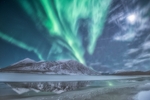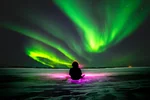Best times to see the aurora borealis across Canada
The dazzling, colourful dance of the Northern Lights is a breathtaking spectacle that should be on every traveller's bucket list — but timing is everything when it comes to catching the auroral display in all its glory.
While the lights have been seen throughout the year, your chances of viewing them are greater during certain seasons (1). Across Canada's northern skies, the best chances to see the Northern Lights are between late August through April. Autumn and early winter mean long, dark nights. The cold weather also brings a higher chance of clear skies in northern latitudes — ideal for aurora viewing.
Our local experts have put together this guide to the best times and places across Canada to see the Northern Lights shimmer across the country’s night skies.
Popular Northern Lights tours in Canada
Fall Colours and Northern Lights in Yellowknife
This four-night itinerary combines two iconic experiences: the beauty of Canada’s fall colours and the natural wonder of the Northern Lights. You’ll travel to Yellowknife, the capital of the Northwest Territories. Along with taking in nature’s best, you’ll enjoy seasonal activities, such as hiking, fishing and wildlife tours.
Trip length (number of nights): 4
Nights in Yellowknife: 4
Aurora viewing evenings: 3
Yukon Northern Lights Resort and Spa in Winter
This itinerary takes you from Vancouver to Whitehorse, the capital of the Yukon, before a short transfer to the resort. Far from city lights, this remote resort offers only northern-facing cabins for prime viewing in comfort. Enjoy the sauna, try dogsledding, and explore the cultural highlights of Whitehorse.
Trip length (number of nights): 5
Nights in Whitehorse: 4
Aurora viewing evenings: 4

Keep reading or chat with one of our local travel experts. We’re passionate about Canada and can help you at any stage of your vacation planning.
Winter: December to February
Winter is an enchanting time to witness the Northern Lights in Canada, thanks to its long, dark nights and frequent clear skies. For both locals and visitors, this season offers the chance to experience other unique activities like ice-fishing, snowshoeing, or simply enjoying a hot cocoa by the fire in a cozy winter lodge.
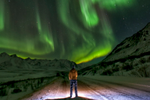
Spring: March to May
Even as the temperatures start to rise in the spring, the aurora borealis doesn't take a break. Northern regions of Canada continue to put on a show, and it's a great time for wildlife enthusiasts to mix aurora viewing with wildlife tours and even birdwatching as migratory birds return for the season.
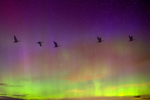
Summer: June to August
While summer means more daylight and less aurora viewing time, it's not impossible to see the lights in the some Northern areas of Canada — where there is nightfall. Do note that some areas do not get much dark during the summer at all. Both the Yukon and the Northwest Territories experience the Midnight Sun during the summer, and in the northernmost regions the sun doesn’t set for months. Visitors can enjoy activities like fishing, hiking, or exploring local markets during the long, sunny days.

Fall: September to November
Fall is the second-best season — after winter — for viewing the Northern Lights. As the days shorten and the nights darken, the aurora becomes visible again. This season offers visitors a scenic landscape painted with the golds and reds of the leaves changing colour, a sight followed up with the vibrant nighttime spectacle of the aurora borealis.

Factors affecting the visibility of Northern Lights
- Solar Activity: The Northern Lights are caused by solar particles colliding with atmospheric gases. Therefore, higher solar activity typically leads to more vibrant and frequent displays. Keep an eye on the solar activity forecast to increase your chances of witnessing this spectacular show. The period of peak solar activity during the sun's solar cycle is known as the solar maximum. Scientists have predicted that the next solar maximum will occur in 2024.
- Weather Conditions: Clear, dark skies are crucial for viewing the Northern Lights. Overcast conditions can obscure the view, making a clear weather forecast your best friend for aurora hunting. Winter seasons are usually the best because of longer nights and clearer skies.
- Light Pollution: Areas with less light pollution, such as rural locations away from city lights, offer the best viewing conditions (2). Bright city lights can outshine the aurora, so it's recommended to seek out dark sky preserves or remote areas for the best experience.
Why book your trip with Fresh Tracks Canada?
Unforgettable Canadian vacations made just for you
Enjoy local expertise and guidance with a fully planned itinerary. Personalize your trip by adding extra time in Canada at the start or end of your Northern Lights tour.
We take care of all the details
Relax and focus on making memories. Let us make all of the bookings for you, including your guided Northern Lights tour, hotels, excursions and activities, and transfers.
Support when you need it
We’re here to make sure you get the inside scoop before you even leave home. And you can relax on your vacation because you know that we’re a phone call away if you have any questions while you’re in Canada.
Best time to see aurora borealis across Canada by location
Canada is the world’s second largest country and offers many places to take in the lights. Whether you come to see this simmering spectacle in Yellowknife in the Northwest Territories or Churchill in Manitoba, every Northern Lights destination in Canada offers an unforgettable experience.
1. Yellowknife, Northwest Territories
As the capital of Canada's Northwest Territories, Yellowknife is regarded as one of the country's top aurora cities with optimal northern location and weather conditions. The lights appear here on average three nights per week from late August through April, with peak viewing between 10p.m. and 2a.m. Though cold, winter temperatures help guarantee clear dark skies ideal for spotting the aurora borealis.
The prime aurora viewing season in Yellowknife is between August and October.
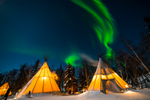
2. Whitehorse, Yukon
Though not as far north, Whitehorse still offers excellent northern lights viewing from late summer through early spring. Auroral displays begin as early as 9p.m. during winter months when nights are longest. Wait for cold, clear nights and escape the city's light pollution for prime viewing opportunities.
The best time to see the Northern Lights in Whitehorse is between September and early April.
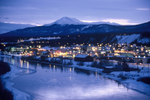
3. Churchill, Manitoba
Beloved polar bear capital by day, Churchill transforms into one of the world's best northern lights viewing destinations after dark. Well over 200 nights annually feature the mystical glow of the aurora from late summer through spring. Churchill’s location directly under the auroral oval means it often experiences active, colourful displays.
The prime aurora viewing season for Churchill is between late August and April, with January to March being the best months.

4. Inuvik, Northwest Territories
As Canada's northermost town, Inuvik experiences northern lights around 240 nights per year, from August through early May. Located above the Arctic Circle, the town enjoys direct views of colourful auroral arcs and streams. Prime viewing lasts several hours after dark.

5. Iqaluit, Nunavut
Aurora displays frequent the skies above Iqaluit from late August through April, peaking in brillance and activity between 10p.m. and 1a.m. The Northern Lights are visible more than 200 nights a year, glowing brightly above the rocky tundra.
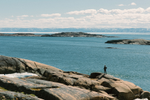
6. Tuktoyaktuk, Northwest Territories
This remote hamlet on the Arctic Ocean is considered Canada's northern lights capital, with dazzling displays happening more than 300 nights annually. The best time is from late September to early April. The flat, treeless landscape offers uninterrupted views of the dancing lights.

7. Watson Lake, Yukon
Thanks to its remote northern location, Watson Lake enjoys great Northern Lights viewing from September through early April. Though cold, clear winter nights offer ideal conditions for seeing the dancing auroral displays from this atmospheric town.
8. Nahanni National Park Reserve, Northwest Territories
Within the Mackenzie Mountains, Nahanni sees stunning Northern Lights on around 200 nights per year between late August and April. Though remote, its pristine skies offer ideal viewing of the mystical glowing ribbons gracing the sky.
9. Jasper National Park, Alberta
In the Canadian Rockies, Jasper National Park witnesses amazing Northern Light displays from September through March during years with high solar activity. Though less frequent than up north, the lights glow brightly above the park's majestic mountain peaks.
10. Prince Albert National Park, Saskatchewan
Though not as reliable as other destinations, this remote park still enjoys occassional Northern Light displays from September through April during peak solar activity, thanks to its relatively dark skies.
11. Kejimkujik National Park, Nova Scotia
On the country’s east coast, the Northern Lights are visible in this dark sky preserve on roughly 100 nights annually during fall and winter. Though less common here, auroral displays stand out vividly above the park's tranquil forests and lakes.
Conclusion
The best time to see the Northern Lights in Canada is between early autumn and late winter, depending on the region of the country. The long nights and reduced precipitation usually make for clear skies in the Canada’s northern regions, which are under the aurora oval and well suited for aurora viewing.
At NorthernLightsCanada.com, our local travel experts craft unforgettable Canadian vacations. We take care of all the arrangements for your trip, so you can relax and focus on making travel memories. Our Northern Lights trips include guided aurora viewing tours, and unique local activities, such as dog sledding, wildlife viewing, hot springs, and spas.
Explore Northern Lights by region
Discuss your Northern Lights tour with a Canadian travel expert
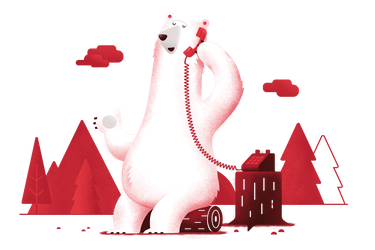

Sign up for travel inspiration
Our newsletter is full of travel tips and local insights for your Northern Lights tour in Canada.

